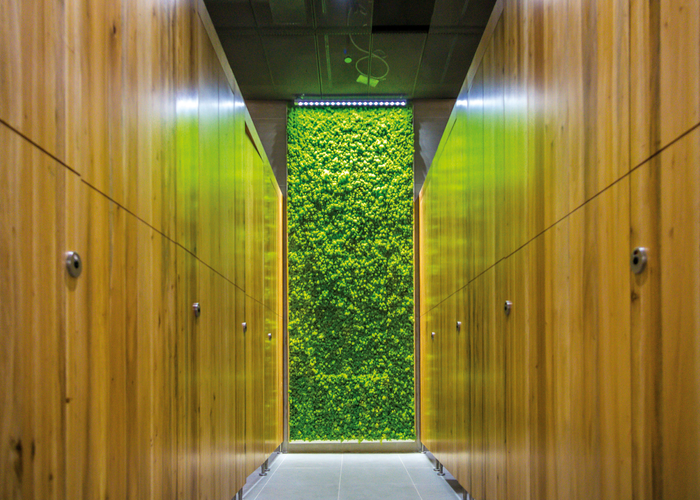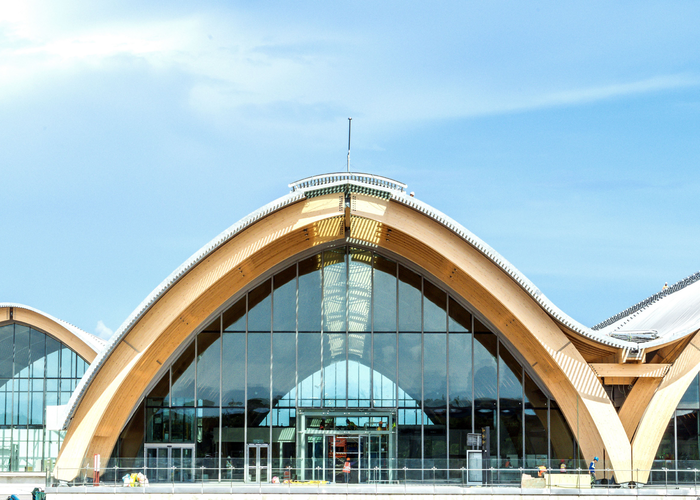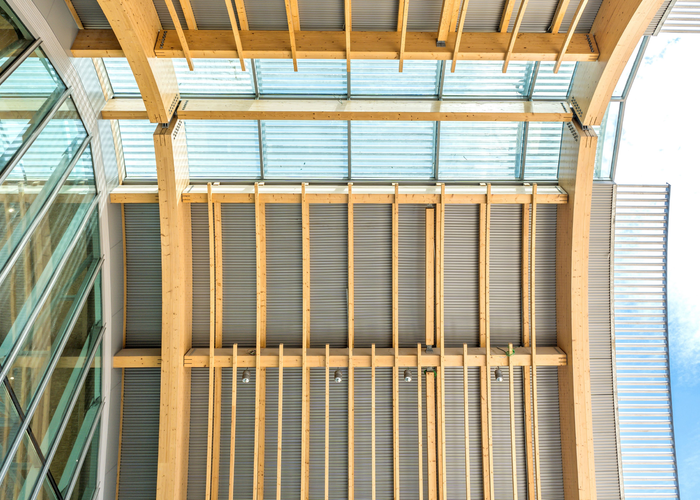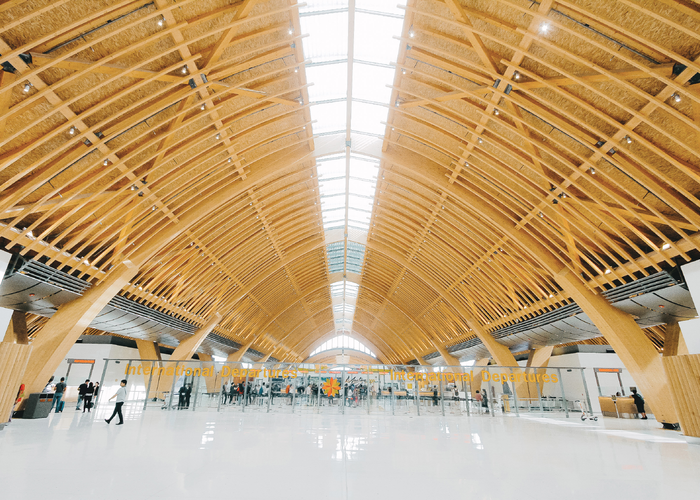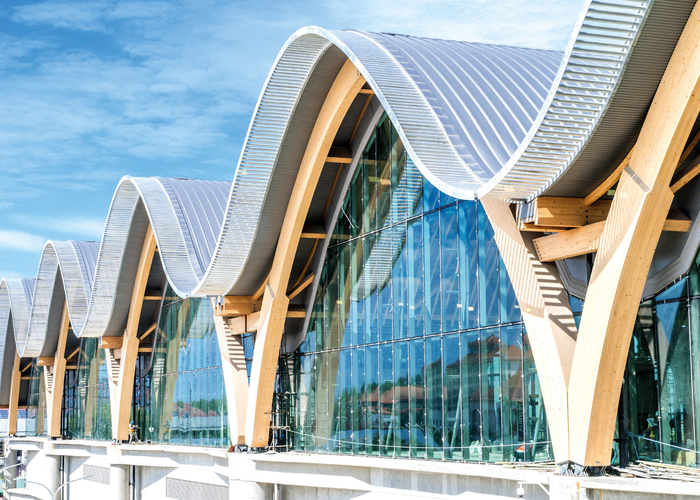
Timber construction from Austria takes off
A project of superlatives has been realised by the Lower Austrian timber construction company Rubner: Terminal 2 of Mactan Cebu International Airport, the second largest airport in the Philippines. The architects earned a place in the book of records with the elegant wooden structure. It represents the largest wooden building in the whole of Asia and the continent's first airport in wooden construction. Work is already underway on the second – again, of course, with Rubner's timber construction professionals.
Turquoise water, white sandy beaches, bungalows with roofs made of palm leaves – this is what holidaymakers on Cebu, Mactan and the many other islands of the southern Philippines are looking for and find. The South Sea flair enchants travellers the moment they step off the plane: The curved, wooden roof of Terminal 2 is reminiscent of a palm-roofed beach hut – except for the dimensions, of course.
Moss, shells, wood
The three-storey building consists of a central, three-aisled entrance hall with 48 check-in desks, the largest duty free in a departure area in the Philippines, a spa, restaurants, bars and much more. The laterally adjoining wings of the building, which provide access to the gates, continue the undulating roof construction that symbolises the surf on Mactan's coasts. Natural materials were used throughout the terminal. In addition to different species of wood on the walls of the sanitary facilities, moss from Italy, for example, was used. The polished stone floor covering with glittering mother-of-pearl inlays is reminiscent of the sunny sandy beaches of Cebus. The architects of the Integrated Design Association from Hong Kong originally planned the building as a steel structure. However, the intention was to offer arriving and departing guests something special, to welcome and bid farewell to visitors in a light, resort-like atmosphere. The building materials should reflect the friendliness, openness and warmth of the culture of the Philippines. The choice therefore, for design, ecological and traditional reasons, fell upon the most sustainable of all materials: wood. Wood processing has a centuries-old tradition in the Philippines – something which the island state has in common with Austria.
Safe, beautiful, wood
"Building with wood means extremely fast, precise and robust construction – with outstanding aesthetic, ecological and energetic results," says Rubner project manager Anton Wanas. "Wood offers excellent climate behaviour and enables a waste-free recycling economy. The sound insulation properties and fire behaviour can also be controlled to a high degree." Furthermore, wood is extremely stable, which proved a decisive factor in the earthquake-prone region of South East Asia. "Glued laminated timber constructions are able to withstand the highest seismic loads. The frequent earthquakes as well as the wind loads reaching 200 km/h that can be expected here during the typhoon season were good arguments in favour of the glued laminated timber construction," explains Wanas. Less obvious are the stresses that moisture, strong sunlight, termites and other pests place on the wood. But the Austrian specialist also knew how best to deal with them: namely by calling on another Austrian specialist. With wood preservation from the Tyrolean ADLER-Werk Lackfabrik, Rubner convinced the client and the team of architects. The transparent wood finish Lignovit Plus LB does for spruce what a good sunscreen does for holidaymakers' skin: it protects it, nourishes it and maintains its natural beauty.
Reliable, fast, wood
The project sets standards not only for the Austrian timber construction company, but also in Asia: It is the first airport building whose supporting structure and roof structure are made entirely of wood. 4,500 cubic metres of glued laminated timber were used for the undulating barrel roof supporting structure with a height of 15 metres and a span of 30 metres. Rubner prefabricated the necessary 23-metre-long arched truss halves at its Ober-Grafendorf site. The components were then shipped in three instalments via the Rhine-Main-Danube Canal and Antwerp to the Philippines and assembled in Lapu-Lapu City on the island of Mactan in just three months. A real leap forward! For Austrian timber construction as well as for the future of such large-scale projects: fast, large-scale, but also safe, beautiful and sustainable. That's wood.
© by adler-lacke.com
